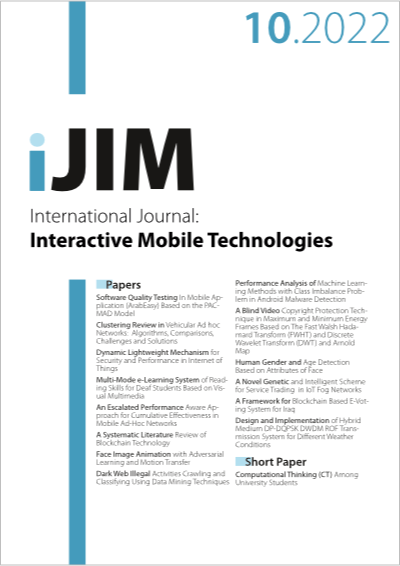A Blind Video Copyright Protection Technique in Maximum and Minimum Energy Frames Based on The Fast Walsh Hadamard Transform (FWHT) and Discrete Wavelet Transform (DWT) and Arnold Map
DOI:
https://doi.org/10.3991/ijim.v16i10.30039Keywords:
Fast Walsh Hadamard Transform (FWHT), Discrete Wavelet Transform (DWT), Arnold MapAbstract
Video copyright protection is the most generally acknowledged method of preventing data piracy. This paper proposes a blind video copyright protection technique based on the Fast Walsh Hadamard Transform (FWHT), Discrete Wavelet Transform (DWT), and Arnold Map. The proposed method chooses only frames with maximum and minimum energy features to host the watermark. It also exploits the advantages of both the fast Walsh Hadamard transform (FWHT) and discrete wavelet transforms (DWT) for watermark embedding. The Arnold map encrypts watermarks before the embedding process and decrypts watermarks after extraction. The results show that the proposed method can achieve a fast embedding time, good transparency, and robustness against various attacks.
Downloads
Published
How to Cite
Issue
Section
License
Copyright (c) 2022 Haider Th.Salim Alrikabi; Mohammed S. Resen, Muna M. Laftah

This work is licensed under a Creative Commons Attribution 4.0 International License.



